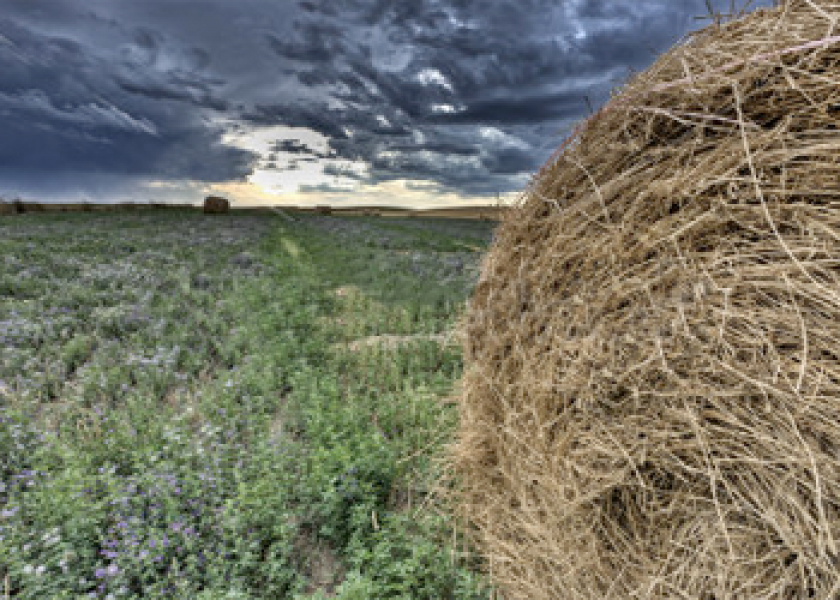Considerations for Winter Injury and Winter Kill in Alfalfa

By: Karla Hernandez, South Dakota State University Extension
Main concerns about alfalfa production during this time of the year are the potential for winter injury and winter kill. We have had a pretty mild winter with some cold temperatures and some above freezing temperatures for the most part. However, the lack of snow cover is one of the main issues producers are worried about for the next season’s crop production, as alfalfa plants could certainly die if exposed to extremely cold temperatures.
In general, alfalfa plants can tolerate up to three weeks of winter injury before the plants are killed. The length of time will be less if soil temperatures are near freezing and longer if the soil is colder. This is primarily due to the plant being forced into a deeper dormancy when the soil is colder. The plant is therefore less likely to leave dormancy in early-spring conditions, and hence becoming susceptible to an early frost.
What are the factors that could affected alfalfa plants this winter leading to a winter kill?
- Stand age: older stands are more likely to winterkill than younger plants.
- Soil pH: soils with a pH above 6.6 are less likely to experience winter injury.
- Soil fertility: stands planted in soils with high natural fertility are less likely to experience winter injury than those with low fertility.
- Variety: Alfalfa varieties with superior winter hardiness ratings and a high disease resistance index are less likely to experience winter injury.
- Cutting management: Harvest frequency and timing of fall cutting will affect alfalfa winter hardiness. The general trend shows that the shorter the interval between cuttings during the growing season, the greater risk of winter injury. An aggressive harvest schedule prevents the plant from storing carbohydrates in its root structure which it will need to maintain health as it regrows. Stands in which last cutting is taken between September 1 and middle of October are at greatest risk, as plants did not have enough time to accumulate adequate carbohydrate levels in the root system before winter.
- Snow cover: Snow provides insulation to the plants and the crown. The crucial temperature region is two to four inches below the soil surface where a large part of the root structure is located. Stands that have at least six inches of stubble left will be able to retain more snow cover and be less susceptible to winter injury.
When and where to look for winter injury and winter kill?
Once the snow cover melts, it is advised to walk through your field, assessing for potential problems with your upcoming season’s alfalfa production. Here are some tips that will help you get started on where to look for possible winter injury:
- Stands which are slow to green up. Compare your stand to other fields in the area. If you notice that some areas are starting to grow and other areas of your alfalfa field still brown, it is time to check those brown stands for injury or death.
- Winter-killed roots will have a gray appearance. If the root is soft and water can be easily squeezed from it, or it has a brown color, it is a possible sign of winter cold-related death.
- Asymmetrical growth and uneven growth are also two indicators of winter injury. Compare the shoots on the same plant, and if you notice that one set of shoots seems to be drastically outperforming another in terms of growth, it could be that winter cold damaged the bud structure of your plants.
Guideline on stem density
If you think your stands have been injured, you can follow this guideline to make decisions to either keep or replant your alfalfa field after winter injury and winter kill.
| Stem Density (stems/ft2) | Decision |
| Under 40 | Poor yield production. Consider replanting |
| 40-55 | Limitations in yield potential |
| Over 55 | No limitations in yield potential |







